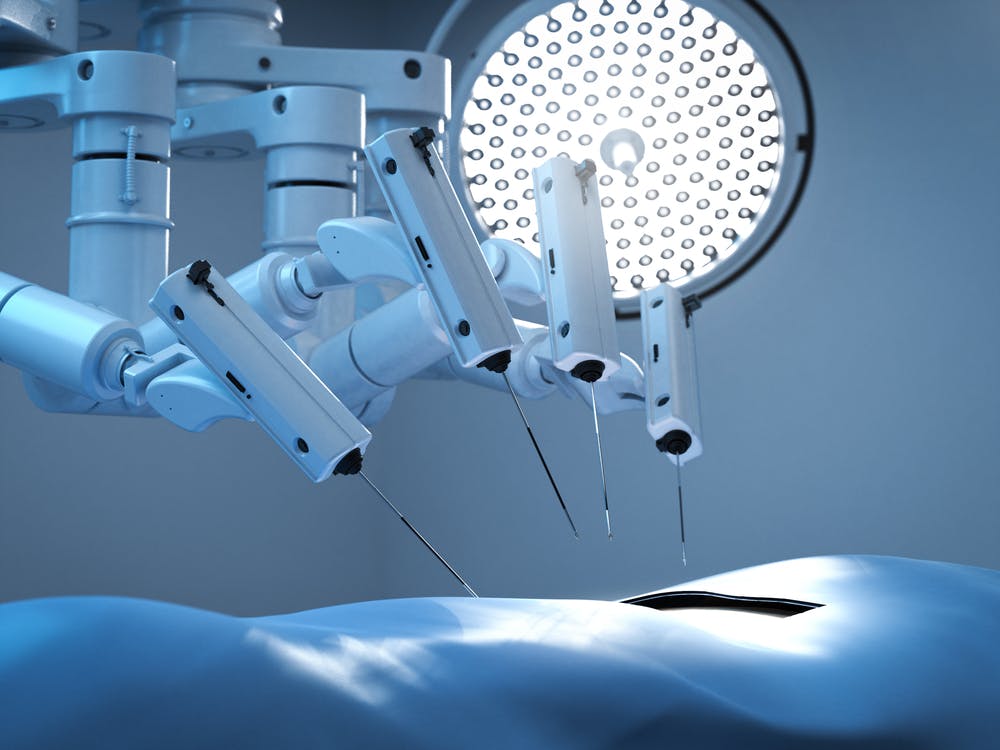Surgery is one of the main treatment options for endometriosis; now, robotic-assisted surgery for endometriosis is becoming a more common alternative to traditional surgery. This procedure usually serves to help reduce pain or improve fertility. For some patients, the surgery aims to improve bowel symptoms; for others, though more rarely, surgery can save kidneys that are at risk of severe damage or even organ death due to blockage of the ureters, according to research published in the Journal of the Society of Laparoscopic and Robotic Surgeons.
Robotic-Assisted Surgery: Advantages for Surgeons
Robotic-assisted surgery for endometriosis is essentially a more advanced form of "keyhole" or laparoscopy surgery; instruments are inserted into the abdomen through small ports (channels through the skin) and controlled remotely by a surgeon sitting at a console, usually a few feet away from the patient.
Compared with traditional laparoscopic surgery, research published in Current Opinion in Obstetrics in Gynecology notes, robotic-assisted laparoscopic surgery for endometriosis offers distinct advantages for surgeons. These include:
- An extra instrument in the form of an additional robotic arm
- Greater dexterity with their movements
- Improved control over the camera and surgical view
- Optimized ergonomic factors
Robotic-assisted surgery may also be faster due to improvements in surgical view and dexterity. These advantages are especially relevant in cases of complex bowel endometriosis, as these surgeries tend to last longer and have higher surgical risk compared with cases of endometriosis without bowel involvement.
Presurgical Preparation With Ultrasound
Surgeons carefully select which cases of endometriosis surgery they will perform with robotic assistance rather than with traditional laparoscopy. Bowel endometriosis is an example of when surgeons often prefer the robotic approach.
Ultrasound can aid in this surgical decision-making, but it must be done using an up-to-date approach, as per the International Deep Endometriosis Analysis group, and by a physician with appropriate training. Not only can bowel endometriosis be diagnosed on ultrasound, but clinicians can view and identify specific features including size, depth of penetration and location in the bowel. This information can be critical in surgical decision-making.
Other factors that help determine complex endometriosis cases may also be reliably diagnosed using ultrasound, including obliteration (severe adhesions in the cul-de-sac) and bladder or ureter endometriosis. In addition to illuminating the presence of endometriosis in these locations, ultrasound can help surgeons determine the overall severity of endometriosis preoperatively and plan surgery appropriately.
Ultrasound is as useful in preparing for traditional procedures as it is for robotic-assisted surgery. Regardless of the type of surgery, ultrasound should be done preoperatively to best prepare.
Potential Drawbacks of Robotic Assistance
While robotic-assisted surgery is an exciting and useful technology, there are still some drawbacks. For example, as with any tool, the person operating the robot needs to have good training. Robotic assistance is not a substitute for a surgeon's familiarity with the complexity of endometriosis.
Learning to be an expert robotic surgeon takes time and practice. Due to the limited number of robotic devices produced, this can be a rate-limiting step in the rollout of this technology. Cost is another factor—robotic-assisted surgery is still more expensive than traditional laparoscopic surgery, and this has slowed the integration of robotic-assisted surgery in healthcare systems and centers with limited budgets and resources.
Undoubtedly, robotic-assisted surgery will continue to develop to overcome current obstacles. It is possible that robotic-assisted surgery could someday replace traditional laparoscopy—before this happens, though, more research is necessary to compare robotic-assisted surgery against traditional laparoscopy. Analyzing the length of surgery, cost, patient experience, surgeon experience and patient outcomes will help determine the best way forward.
In any of these future studies, ultrasound is an essential tool in surgical planning. Regardless of the type of surgery, preoperative preparedness secures the highest possible standard of performance for physicians.


